Multi-what? Guitars made from snakes? Multi-scale guitars seem confusing to many guitarists at first. That’s because they look quite different from your regular guitar, with fanned frets, multiple scale lengths on the same guitar, and different components, such as the bridge and pickups, slanted to an angle.
But what are the benefits of a multi-scale guitar?
Sit back, relax, and read on, because this article explains everything you need to know about these revolutionary guitar designs. By the end, you’ll be a complete whizz, and you’ll be able to tell all your friends about the innumerable benefits of multi-scales.
Just what are multi-scales?
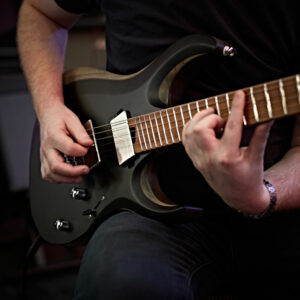 There’s no doubt that multi-scale guitars look quite strange, especially compared to a normal guitar.
There’s no doubt that multi-scale guitars look quite strange, especially compared to a normal guitar.
They feature slanted, or ‘fanned’, frets, which point in different directions at opposite ends of the fretboard. This is because each string has a different scale length (i.e. distance from the bridge to the headstock), which has numerous benefits.
The frets, bridge, and pickups are slanted to accommodate the design, meaning the bass strings are much longer and tighter, whereas the treble strings are shorter.
Regular guitars seem to be built around the idea that your wrist and fingers will remain upright/straight at all times, perpendicular to the frets. But this is just not so.
There’s an optimal angle for your wrist to be at for maximum comfort, depending on where you are along the fretboard, and your fingers naturally fan out when playing. Multi-scales are built around this idea. They’re all about improving playability and tone.
The main purpose of multi-scale technology, though, is – you guessed it – to provide multiple scale lengths on the same guitar. Read on to find out some of the history and benefits.
The history
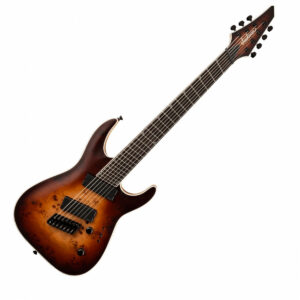 For generations, guitar crafters have been constantly looking for ways to improve the playability and performance of guitars. From new neck designs to body shapes, everything has been explored to make the guitars we know and love today.
For generations, guitar crafters have been constantly looking for ways to improve the playability and performance of guitars. From new neck designs to body shapes, everything has been explored to make the guitars we know and love today.
However, one innovation stands above the rest in recent years, and I bet you know what that is!
Whilst multi-scale technology may seem like a relatively recent innovation, its history actually stretches back hundreds of years.
Acoustic instruments like the bandora and orpharion, both invented by a man called John Rose in the 16th Century, were known to sport the fanned fret design (although very few models survive to this day).
However, the design was only patented a few hundred years later, by E. A. Edgren, exclusively for instruments with a curved fretboard.
Then, 77 years went by and John D. Starrett came up with the StarrBoard, another rather whacky instrument that utilised the multi-scale. But very few were made before production ceased.
So, the world was certainly no stranger to multi-scaled instruments, but they tended to remain in obscurity – in the shadows. Fast-forward to today, and they’re everywhere! Well, what happened?
Enter Ormsby! Aside from producing seriously high-quality guitars as standard, they’re also credited for being the first to fully popularise the multi-scale design on guitars. Back in 2009, this crafty company decided to break a patent that had almost expired and produce some of the first multi-scale electric guitars.
In fact, Ormsby are probably the most well known producer of multi-scale guitars – it sort of became ‘their thing’.
But now, nearly every major guitar manufacturer, such as Schecter, Jackson, and Ibanez, makes their own multi-scale models.
What are the benefits of multi-scale?
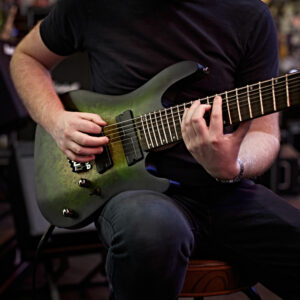 It’s time to separate the snake oil from the sincere truth. What are the benefits of having a different scale length for each string?
It’s time to separate the snake oil from the sincere truth. What are the benefits of having a different scale length for each string?
Just as a quick reminder – the scale length is the distance from the bridge to the nut. A standard guitar has the same length for all the strings. On a multi-scale guitar, however, it’s different for each string.
So rather than a single scale length, such as 25.5″, you get a scale length range, such as 25.5″-28.2″. Here are some of the advantages of this:
Better tension
What’s the point of having different scale lengths? The string tension, of course! If you were to open up a piano, you’d see that the thicker, lower strings are much longer than the thinner high strings. That’s because you get a much better, clearer tone from low strings when they’re longer, and high strings when they’re shorter.
The same principle applies to multi-scales. They give you more length in the lower strings, and less in the higher. This means there’s much more tension in the lower strings, ensuring they don’t sound muddy. It also means you don’t need thicker strings for drop tunings as you would on a regular guitar.
Better intonation
Ahh yes, intonation, the bane of guitarists worldwide. Well, maybe that’s a little dramatic. But intonation is important – it refers to how ‘in-tune’ each fret position is (as opposed to each open string). It’s notoriously difficult, perhaps even impossible, to have perfect intonation across the entire fretboard. Various fret positions will be ever so slightly sharp or flat. It just can’t be helped.
However, multi-scale guitars combat this by offering improved intonation. You’ll find that each fret position sounds super accurate – especially when using drop tunings. In fact, these guitars’ ability to handle extreme drop tunings is one of the main reasons you’re seeing them crop up more and more in the metal scene.
Better tuning stability
With even string tension across the board, you’ll also get better tuning stability from a multi-scale. Again, this is especially true of extended-range or drop-tuned models. Using lower tunings with regular guitars can often result in some seriously shaky tuning, with the strings often going off pitch fast. Multi-scales help to combat this problem.
Final thoughts
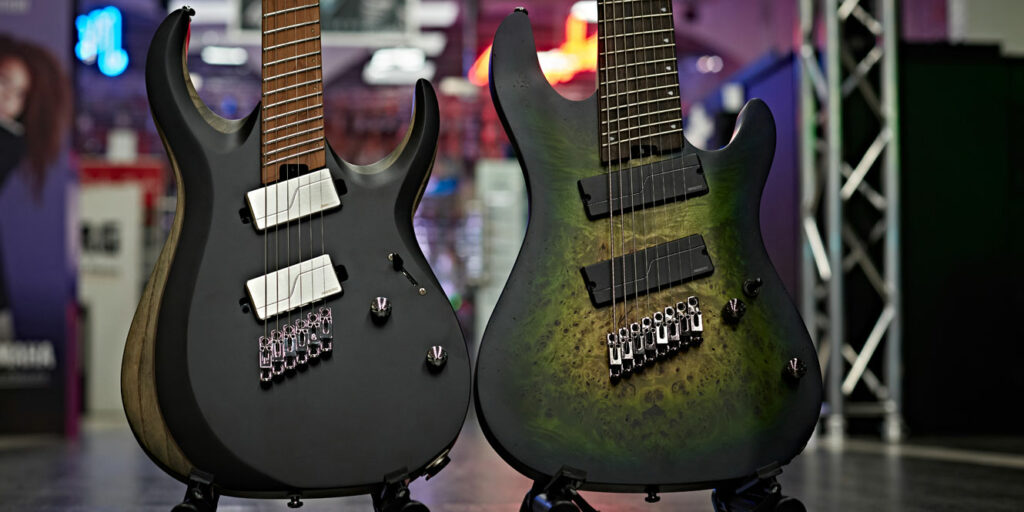
So, there you have it. Everything you need to know about multi-scale guitars. From the fan frets to the slanted bridge, hopefully the mist around these innovations has cleared a little.
Whilst they’re often used in rock and metal, multi-scales are aimed at any player who likes an ultra-modern instrument which is built to handle technicality. They’re also adored by those who use drop tunings.
There are now loads of companies making world-class multi-scale guitars. We recommend the Cort KX508MS-II, G4M 529 Pro Fanned Fret 7-String Electric Guitar, and the Cort X700 Mutility!



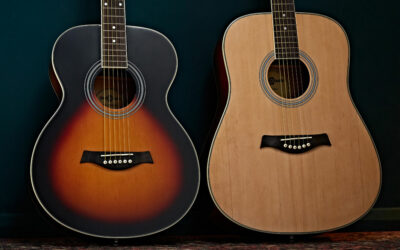

0 Comments